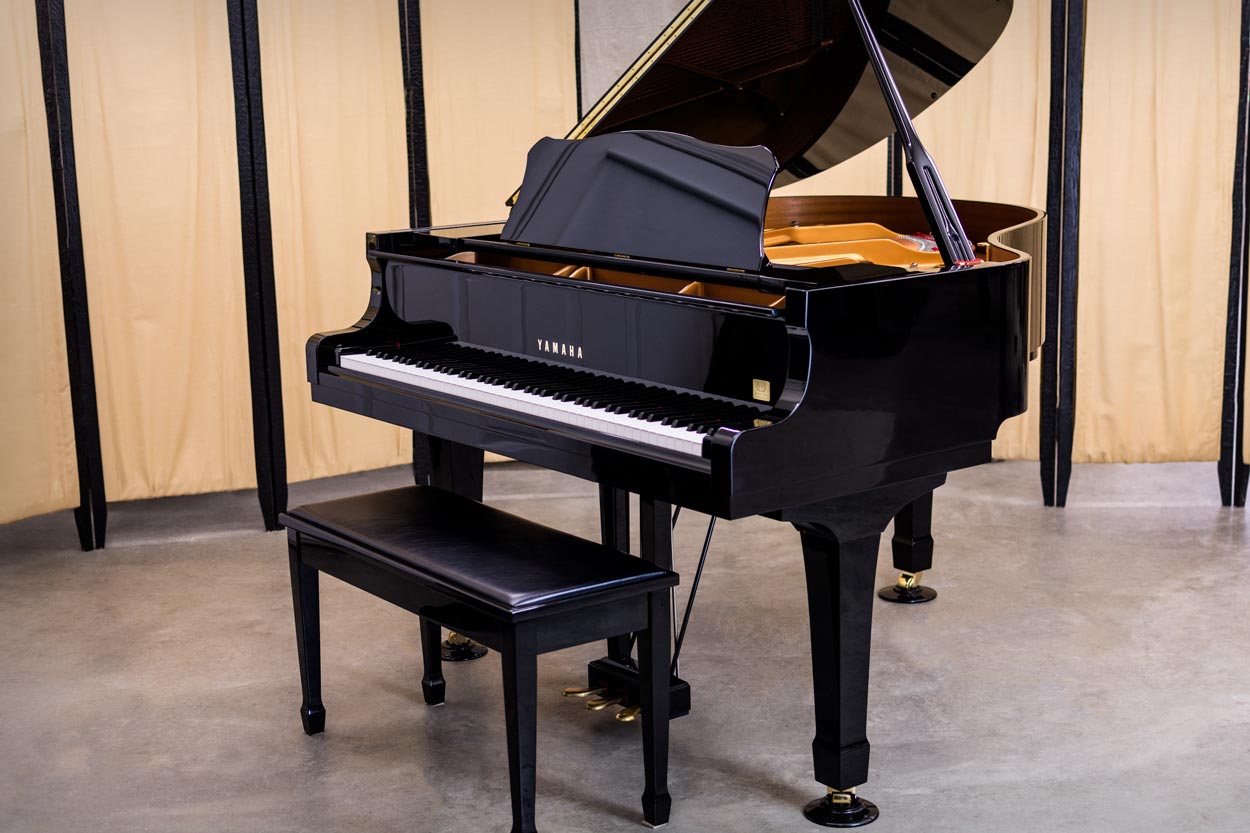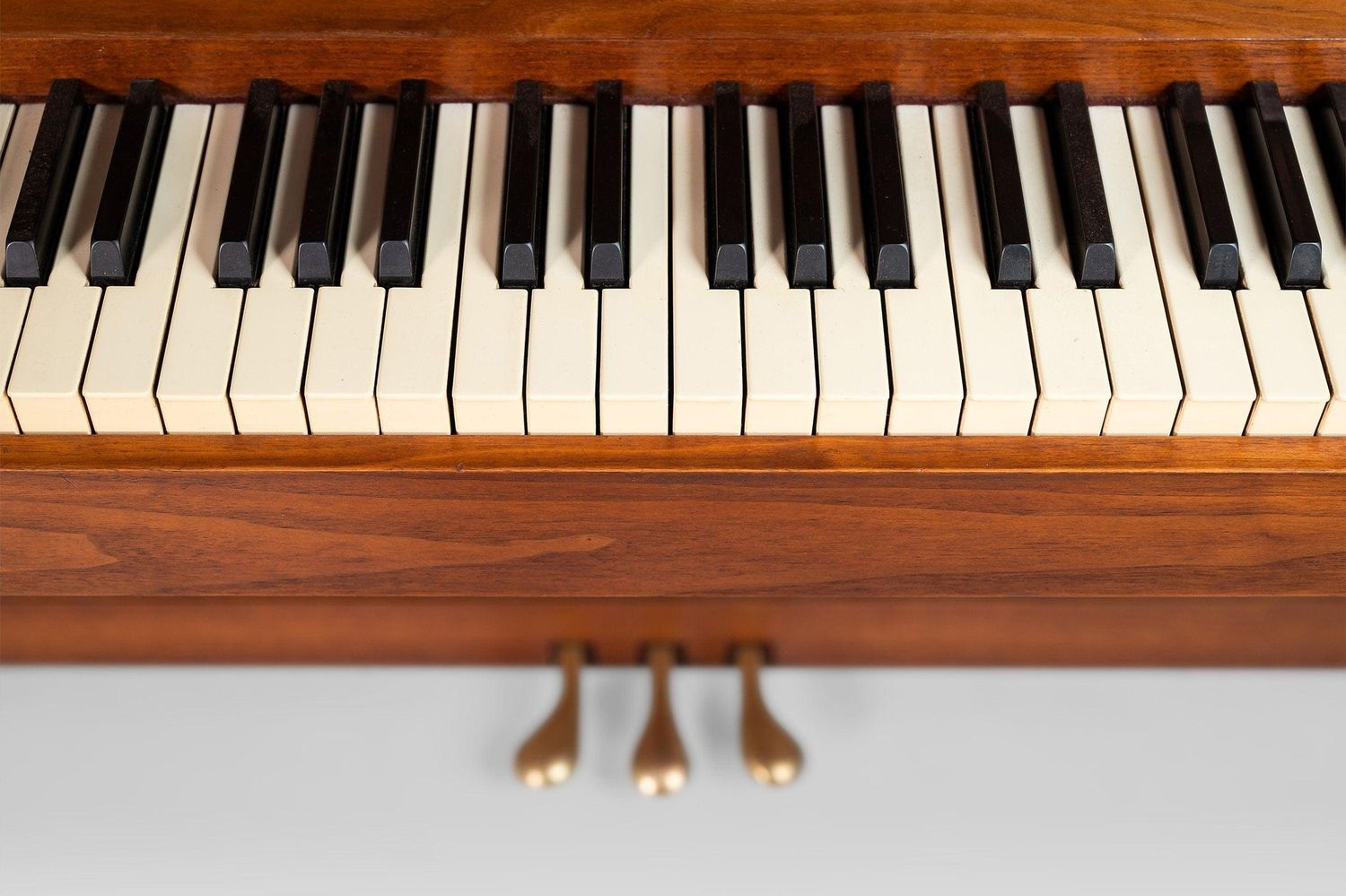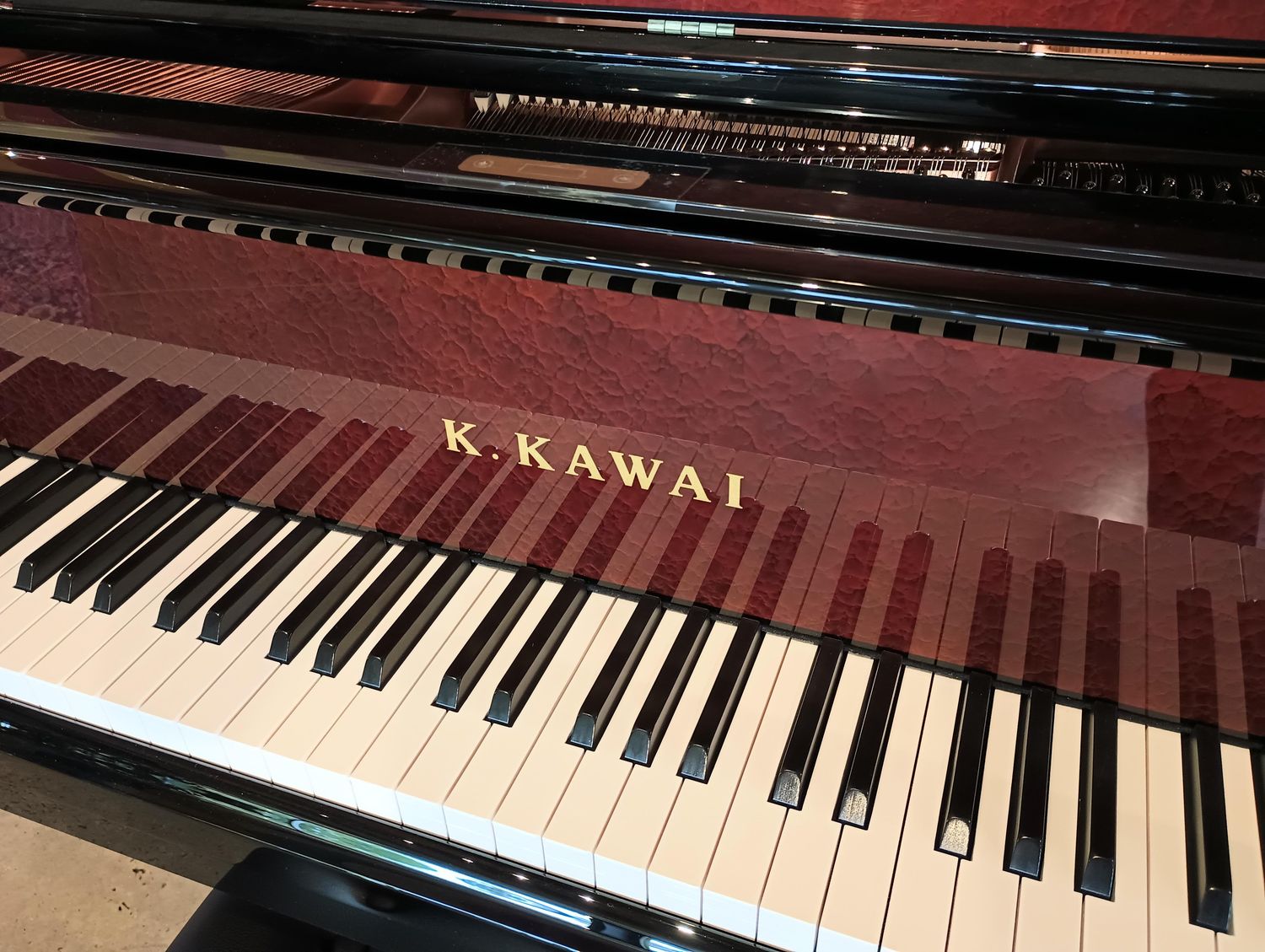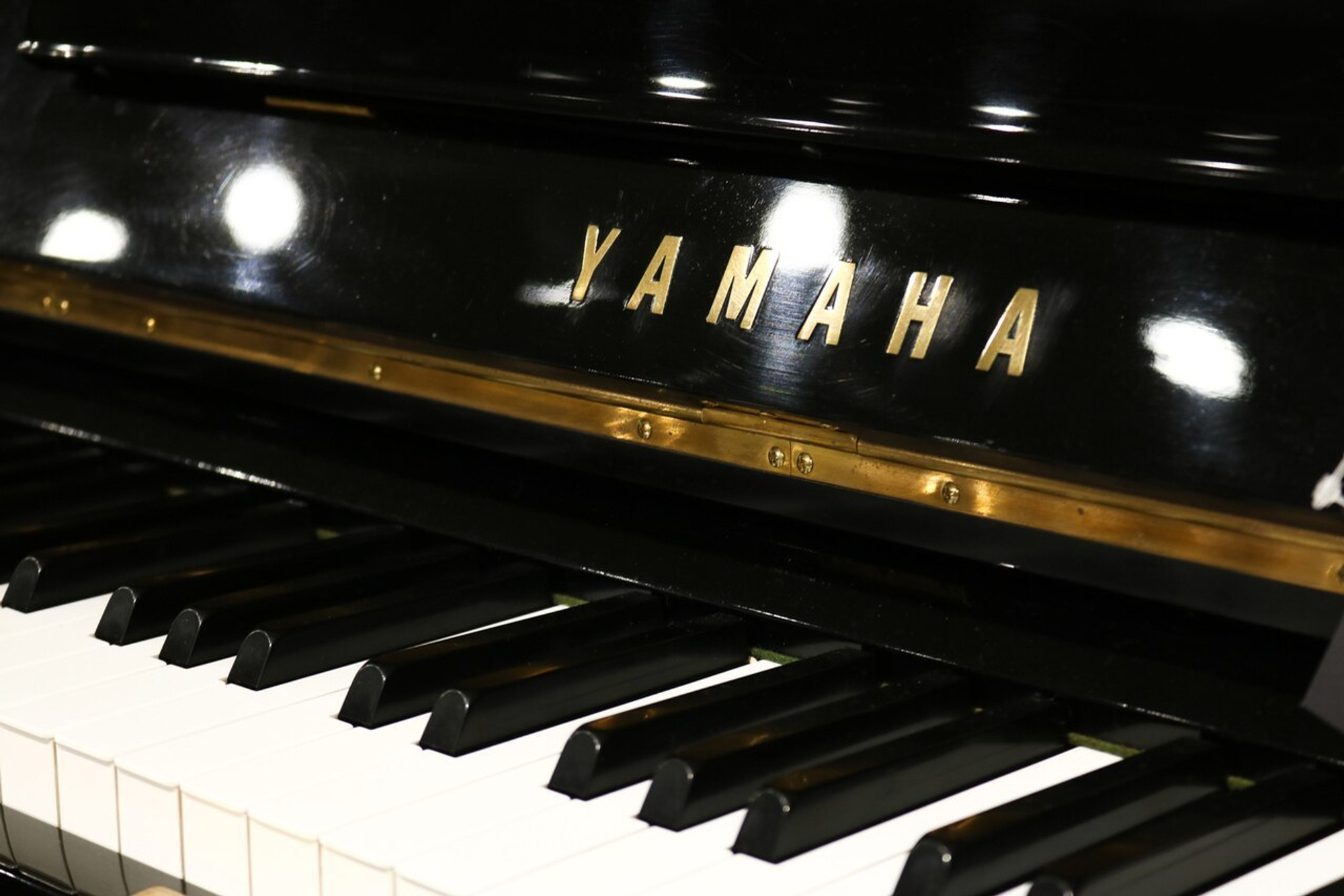Home>Devices & Equipment>Yamaha>How To Clean Piano Keys Yamaha
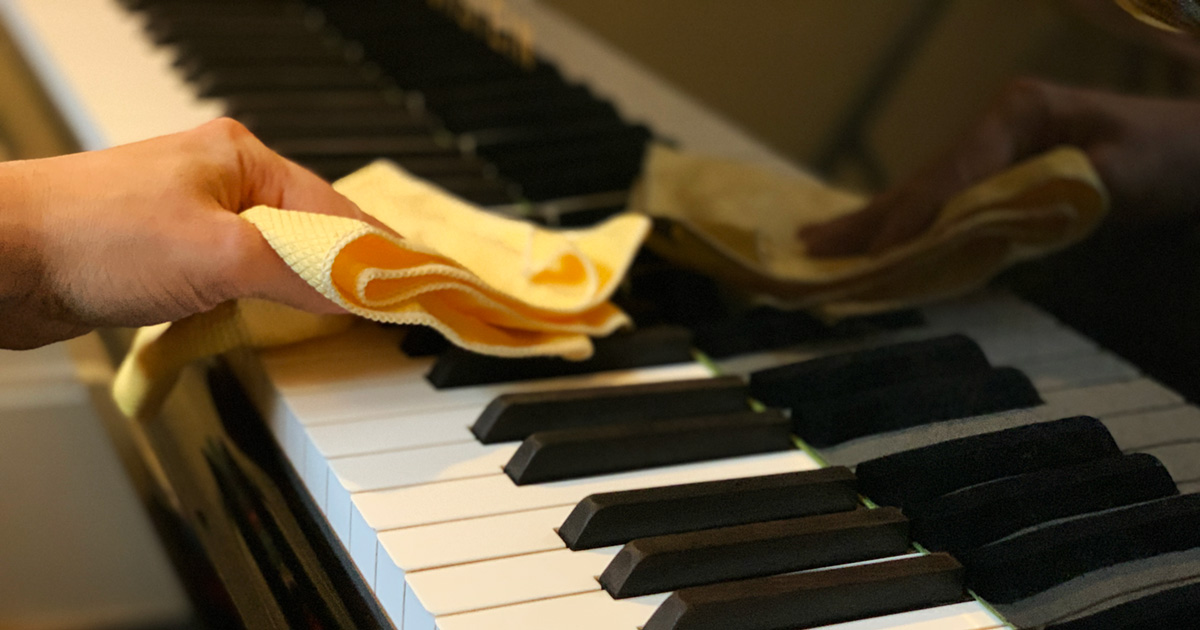

Yamaha
How To Clean Piano Keys Yamaha
Published: October 25, 2023
Learn how to effectively clean your Yamaha piano keys with our step-by-step guide. Keep your instrument looking and sounding its best.
(Many of the links in this article redirect to a specific reviewed product. Your purchase of these products through affiliate links helps to generate commission for AudioLover.com, at no extra cost. Learn more)
Table of Contents
Introduction
Welcome to our guide on how to clean the piano keys of your beloved Yamaha instrument. Just like any other musical instrument, proper maintenance is essential to ensure its longevity and optimal performance. Over time, piano keys can accumulate dirt, grime, and even stubborn stains, which can affect their appearance and playability. This is why regular cleaning is crucial to keep your Yamaha piano in pristine condition.
Understanding the materials used to make piano keys is important when approaching the cleaning process. Most modern pianos, including Yamaha models, use keys made from either synthetic materials, such as acrylic or plastic, or natural materials, such as ivory or ebony. While ivory keys were commonly used in the past, the use of ivory has been replaced with synthetic alternatives due to conservation concerns.
Before you begin cleaning the piano keys, it is important to prepare a cleaning solution that is safe and effective for the specific material of your keys. Different materials require different cleaning methods to ensure that no damage occurs. In this guide, we will provide you with step-by-step instructions on how to clean both white and black piano keys, as well as tips for dealing with stubborn stains and general maintenance.
By following our guide on cleaning Yamaha piano keys, you will not only restore their appearance but also maintain their longevity and playability. Let’s dive into the details and learn how to bring out the best in your Yamaha piano.
Understanding Piano Key Material
Before you start cleaning your Yamaha piano keys, it’s important to understand the material used to make them. This knowledge will help you choose the right cleaning methods and products to ensure the best results without causing any damage.
Modern Yamaha pianos, like many other brands, typically use synthetic materials or natural materials for their keys. Synthetic materials include acrylic and plastic, while natural materials include ivory and ebony. Understanding the specific material of your piano keys will guide you in handling and cleaning them appropriately.
If your Yamaha piano has synthetic keys, cleaning them is relatively straightforward. Synthetic materials are generally more resistant to staining and damage. You can safely use mild cleaning solutions to remove dirt and grime. However, it is still important to avoid using harsh chemicals or abrasive materials that can cause scratches or discoloration.
On the other hand, if your Yamaha piano has natural keys, it’s important to exercise extra caution during the cleaning process. Ivory keys, for example, are delicate and require gentle handling. Ivory can absorb moisture, making it prone to warping and cracking. It’s worth noting that the use of ivory in pianos has been phased out due to ethical and conservation concerns. Most modern pianos, including Yamaha models, now utilize synthetic keytops that resemble the appearance and feel of ivory.
Ebony keys, whether they are made from natural ebony or synthetic ebony, require proper care to retain their dark and polished appearance. Ebony is a dense and resilient wood, but it can still be susceptible to scratches and discoloration if not cleaned and maintained correctly.
By understanding the material of your Yamaha piano keys, you can proceed with confidence knowing how to properly clean and care for them. In the following sections, we will guide you through the step-by-step process of cleaning both white and black piano keys to keep your Yamaha instrument looking and playing its best.
Preparing Your Cleaning Solution
Before you can start cleaning the piano keys of your Yamaha instrument, it’s important to prepare a suitable cleaning solution. The type of solution you use will depend on the material of your piano keys, whether they are synthetic or natural.
If your Yamaha piano has synthetic keys, you can create a simple cleaning solution by mixing a few drops of mild dish soap with warm water. Avoid using harsh detergents or strong chemicals, as they can damage the finish of the keys. It’s best to use a gentle and non-abrasive option to ensure the longevity of your synthetic keys.
For pianos with natural keys, creating a cleaning solution requires a bit more care. Ivory keys are highly sensitive to moisture, so it’s crucial to minimize their exposure to water. Instead of using a liquid solution, you can use a damp cloth or cotton swab dipped in warm water to gently clean the ivory or synthetic ivory keytops. It’s important to avoid saturating the keys with water to prevent warping or cracking.
For ebony keys, you can also use a damp cloth or cotton swab with warm water. However, if the keys have accumulated stubborn grime or stains, you can mix a small amount of mild dish soap with warm water to create a slightly stronger cleaning solution. Again, make sure to wring out the cloth or cotton swab thoroughly to prevent excess moisture from seeping into the wood.
Regardless of the type of keys your Yamaha piano has, it’s crucial to dry them thoroughly after cleaning to prevent any water or moisture damage. Keep a soft, lint-free cloth or towel handy to immediately dry the keys after you’ve cleaned them.
Now that you have your cleaning solution ready, let’s move on to the next section where we will guide you through the step-by-step process of cleaning the white and black piano keys of your Yamaha instrument.
Cleaning Process
Now that you have prepared your cleaning solution, it’s time to dive into the cleaning process for your Yamaha piano keys. Cleaning the keys on a regular basis will not only keep them looking their best but also ensure optimal playability. Follow these steps to clean your piano keys effectively:
- Start by using a soft, lint-free cloth or microfiber cloth to gently remove any loose dust or debris from the keys. This step will help prevent scratching the keys during the cleaning process.
- If your Yamaha piano has synthetic keys, dampen a clean cloth or cotton swab with the mild cleaning solution you prepared earlier. Gently wipe each key in a back-and-forth motion, starting at the top and working your way down. Avoid excessive moisture and ensure that the cloth or swab is only slightly damp, not wet.
- For ivory or synthetic ivory keys, dip a cloth or cotton swab in warm water and wring out the excess moisture. Gently wipe each key, being cautious not to apply too much pressure or soak the keys with water. Remember, ivory keys are delicate and can absorb moisture, potentially leading to warping or cracking.
- If your Yamaha piano has ebony keys, you can use the same method as with ivory keys. Use a damp cloth or cotton swab with warm water to wipe each key, taking care not to apply excessive pressure or use excessive moisture. If there are stubborn stains or grime, you can lightly dip the cloth or swab in the mild cleaning solution you prepared earlier.
- Pay special attention to the areas between the keys, as dirt and debris can accumulate there. Gently clean these areas using a cloth or cotton swab, making sure not to force any debris further into the piano.
- After cleaning each key, immediately dry it using a soft, lint-free cloth or towel. This step is crucial, as it helps remove any remaining moisture and prevents water damage to the keys.
Following these simple cleaning steps will help keep your Yamaha piano keys looking clean and well-maintained. Now that you’ve learned how to clean the piano keys, let’s move on to the next section, where we will guide you through cleaning the white and black keys individually.
Cleaning the White Keys
The white keys of your Yamaha piano deserve special attention when it comes to cleaning. Due to their prominent position and frequent use, they can become dirty and discolored over time. Follow these steps to effectively clean the white keys:
- Start by removing any loose dust or debris from the white keys using a soft, lint-free cloth or microfiber cloth. Gently wipe the surface of each key to ensure a clean starting point.
- If your Yamaha piano has synthetic white keys, you can use a slightly damp cloth or cotton swab dipped in the mild cleaning solution prepared earlier. Begin at the top of the key and wipe downwards in a back-and-forth motion. Make sure not to oversaturate the keys with moisture.
- For ivory or synthetic ivory white keys, it’s essential to avoid using excessive water. Instead, use a damp cloth or cotton swab with warm water to gently clean each key. Wring out the cloth or swab thoroughly to minimize moisture exposure. Ivory keys are delicate and can absorb water, which may lead to warping or cracking.
- If your Yamaha piano has ebony white keys, follow the same process as with ivory keys. Use a damp cloth or cotton swab with warm water to wipe each key, ensuring no excess moisture is applied. If there are stubborn stains or grime, you can lightly dip the cloth or swab in the mild cleaning solution to tackle them gently.
- To clean the sides of the white keys, use a cloth or cotton swab dampened with cleaning solution or warm water. Gently wipe along the edges, removing any dirt or residue that may have accumulated.
- Once you have cleaned each white key, dry them immediately using a soft, lint-free cloth or towel. This step is crucial to remove any remaining moisture and prevent water damage.
Following these steps will help keep the white keys of your Yamaha piano looking bright and clean. The next section will focus on cleaning the black keys, providing specific guidance for their care and maintenance.
Cleaning the Black Keys
The black keys of your Yamaha piano also require proper cleaning to maintain their appearance and playability. Although they may not show dirt and discoloration as prominently as the white keys, regular cleaning is still essential. Follow these steps to effectively clean the black keys:
- Begin by using a soft, lint-free cloth or microfiber cloth to remove any loose dust or debris from the black keys. Gently wipe the surface of each key to ensure a clean starting point.
- If your Yamaha piano has synthetic black keys, you can use a slightly damp cloth or cotton swab dipped in the mild cleaning solution prepared earlier. Start at the top of each key and wipe downwards in a back-and-forth motion. Take care not to apply excessive moisture.
- For ivory or synthetic ivory black keys, it’s crucial to minimize the use of water. Instead, use a damp cloth or cotton swab with warm water to gently clean each key. Ensure the cloth or swab is wrung out thoroughly to avoid saturating the keys. Ivory keys can absorb water, potentially leading to damage.
- If your Yamaha piano has ebony black keys, you can follow the same process as with ivory keys. Use a damp cloth or cotton swab with warm water to wipe each key, making sure not to apply excessive pressure or moisture. For stubborn stains or grime, lightly dip the cloth or swab in the mild cleaning solution, if needed.
- To clean the sides of the black keys, use a cloth or cotton swab dampened with cleaning solution or warm water. Gently wipe along the edges, removing any accumulated dirt or residue.
- After cleaning each black key, dry them immediately using a soft, lint-free cloth or towel. This step is vital to remove any remaining moisture and prevent water damage.
Following these steps will help keep the black keys of your Yamaha piano looking clean and well-maintained. Proper care and regular cleaning will ensure that the keys continue to provide smooth playability and a beautiful visual appeal. In the next section, we will discuss how to handle stubborn stains on both white and black keys.
Dealing with Stubborn Stains
Occasionally, you may encounter stubborn stains on your Yamaha piano keys that require a bit of extra attention. Whether it’s a persistent mark or a deep-seated stain, here are some tips to help you tackle stubborn stains on both white and black keys:
White Keys:
- If you notice a stubborn stain on a white key, start by gently rubbing the stain with a cloth or cotton swab dipped in a mild cleaning solution. Be careful not to rub too vigorously, as this may cause damage to the key’s surface.
- If the stain persists, you can try using a small amount of non-gel toothpaste on a soft cloth or cotton swab. Gently rub the toothpaste onto the stain in a circular motion. Toothpaste can act as a mild abrasive and may help lift the stain.
- After using toothpaste, wipe away any residue with a clean, damp cloth and then dry the key thoroughly.
- If the stain still persists, it’s best to seek professional assistance to avoid causing further damage to the key.
Black Keys:
- To tackle stubborn stains on black keys, start by gently rubbing the affected area with a cloth or cotton swab dampened in a mild cleaning solution. Avoid using excessive pressure to prevent any damage to the key’s surface.
- If the stain persists, you can try using a small amount of rubbing alcohol on a soft cloth or cotton swab. Gently rub the alcohol onto the stain in a circular motion. Alcohol can help dissolve and remove stubborn stains.
- After using rubbing alcohol, wipe away any residue with a clean, damp cloth and then dry the key thoroughly.
- If the stain still remains, it’s advisable to seek professional assistance to avoid any risk of damage to the key.
Remember, when dealing with stubborn stains, it’s crucial to exercise caution and avoid using overly harsh or abrasive methods that may harm the keys. If you are unsure or uncomfortable handling these stains yourself, consulting a professional piano technician is recommended.
Now that you know how to tackle stubborn stains, let’s move on to the next section, where we will discuss the final steps of the cleaning process: drying and polishing the keys.
Drying and Polishing the Keys
After you have cleaned the piano keys of your Yamaha instrument, it’s important to properly dry and polish them to ensure a pristine and glossy appearance. This final step will help remove any remaining moisture and leave the keys looking their best. Follow these steps to effectively dry and polish the keys:
- To start, take a soft, lint-free cloth or towel and gently pat each key to remove any excess moisture. Make sure to be thorough, ensuring that all keys are adequately dried.
- Next, take a separate clean, dry cloth specifically designated for polishing. Use this cloth to gently buff each key in a gentle circular motion. The polishing cloth will help restore the shine and remove any smudges or streaks left behind.
- If your Yamaha piano keys are made of synthetic material, this step is usually sufficient in achieving a polished finish. However, for natural keys, you may choose to apply a small amount of piano key polish specifically designed for the type of key material.
- If you opt to use piano key polish, follow the instructions on the product carefully. Apply a small quantity of the polish onto a cloth and gently rub it onto each key in a circular motion. Be cautious not to use excessive amounts of polish, as it may leave a residue or build-up on the keys.
- After applying the polish, use a clean, dry cloth to wipe off any excess polish and buff the keys to a smooth and glossy finish.
- Repeat the process for each key until the entire set of piano keys is dried and polished to your satisfaction.
By thoroughly drying and polishing the keys of your Yamaha piano, you will not only enhance their appearance but also maintain their longevity. Remember to use gentle motions during the drying and polishing process to protect the keys from any potential damage.
Now that you have completed the cleaning, drying, and polishing process, your Yamaha piano keys should look clean, vibrant, and ready to be played. In the next section, we will share some general maintenance tips to help you keep your Yamaha piano keys in optimal condition.
General Maintenance Tips
In addition to regular cleaning, there are some general maintenance tips you can follow to keep your Yamaha piano keys in optimal condition. By incorporating these practices into your routine, you will help prolong the lifespan of your instrument and ensure that it continues to perform at its best. Here are some maintenance tips to consider:
- Keep your piano keys free from dust and debris by regularly dusting them with a soft, lint-free cloth. This will prevent the accumulation of dirt, which can lead to discoloration and affect playability.
- Ensure that your hands are clean and free from oils and lotions before playing the piano. This will prevent transferring residues onto the keys, which may cause smudges or stains over time.
- Avoid exposing your piano keys to extreme temperature and humidity fluctuations, as these can affect the wood and cause warping or cracking. Keep your piano in a stable environment with moderate temperature and humidity levels.
- If your piano is exposed to direct sunlight, consider using curtains or blinds to protect it. Prolonged sun exposure can lead to discoloration and damage to the keys and other parts of the instrument.
- Regularly inspect the keys for any signs of damage, such as chips or cracks. If you notice any issues, it’s best to consult a professional piano technician for repairs to prevent further damage.
- Avoid placing drinks or other liquids near your piano. Accidental spills can cause irreparable damage to the keys and internal components of the instrument.
- If you are not using your Yamaha piano for an extended period, consider covering the keys with a soft cloth or piano key cover to protect them from dust and sunlight.
- Lastly, consider scheduling regular professional maintenance and tuning for your Yamaha piano. Professional technicians can assess the condition of the instrument, perform necessary adjustments, and ensure that it remains in optimal playing condition.
By following these general maintenance tips, you can keep your Yamaha piano keys looking beautiful and functioning smoothly for years to come. Incorporate these practices into your piano care routine to maintain the integrity and longevity of your instrument.
Now that you’re equipped with these maintenance tips, you can confidently care for your Yamaha piano keys and enjoy playing on a well-maintained instrument.
Remember, if you have any doubts or concerns about piano maintenance, it’s always advisable to consult a professional piano technician for guidance and assistance.
Conclusion
Caring for the piano keys of your Yamaha instrument is an essential aspect of its maintenance and longevity. Regular cleaning and proper maintenance not only keep the keys looking pristine but also ensure optimal playability and performance. By following the steps outlined in this guide, you can effectively clean and maintain both the white and black keys of your Yamaha piano.
Remember to consider the material of your keys, whether they are synthetic or natural, when choosing the appropriate cleaning methods and solutions. Take care to avoid excessive moisture when cleaning ivory keys to prevent warping or cracking, and use gentle motions to protect the keys from any potential damage.
If you encounter stubborn stains, follow the recommended methods to tackle them, exercising caution and seeking professional help if necessary. Additionally, don’t forget to dry and polish the keys to complete the cleaning process, using appropriate cloth and piano key polish if required.
Implementing general maintenance tips, such as regular dusting, protecting the keys from extreme temperature changes, and scheduling professional maintenance and tuning, will ensure that your Yamaha piano keys stay in optimal condition for years to come.
Now that you have the knowledge and tools to properly care for your Yamaha piano keys, you can enjoy the beauty and playability of your instrument with confidence. Remember, a well-maintained piano is a joy to play and will bring you countless hours of musical inspiration. Happy playing!





